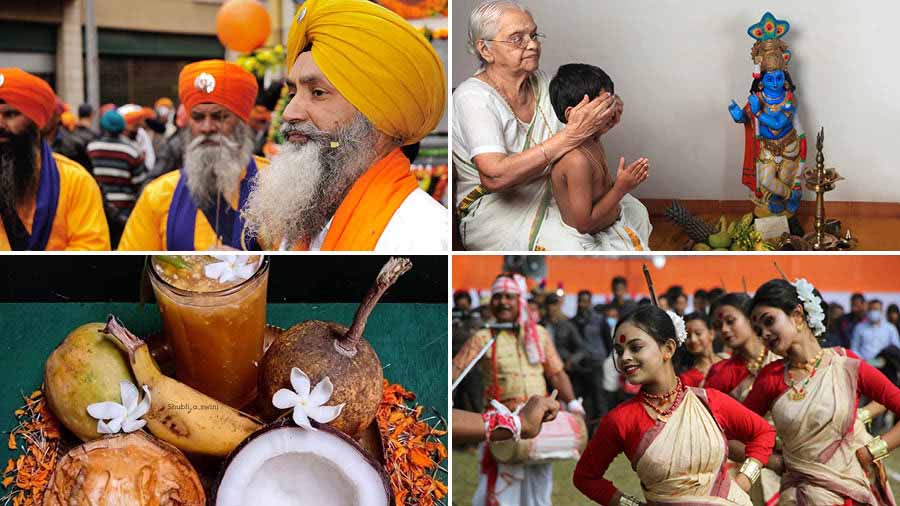The beauty of Indian diversity is most noticeable during its festivals. It isn’t just Kolkata celebrating Poila Baisakh at this time of the year, myriad communities and regions celebrate and have festivals at this time. My Kolkata spoke to Kolkatans across cultures to find out about their traditional celebrations of spring.
Vaisakhi
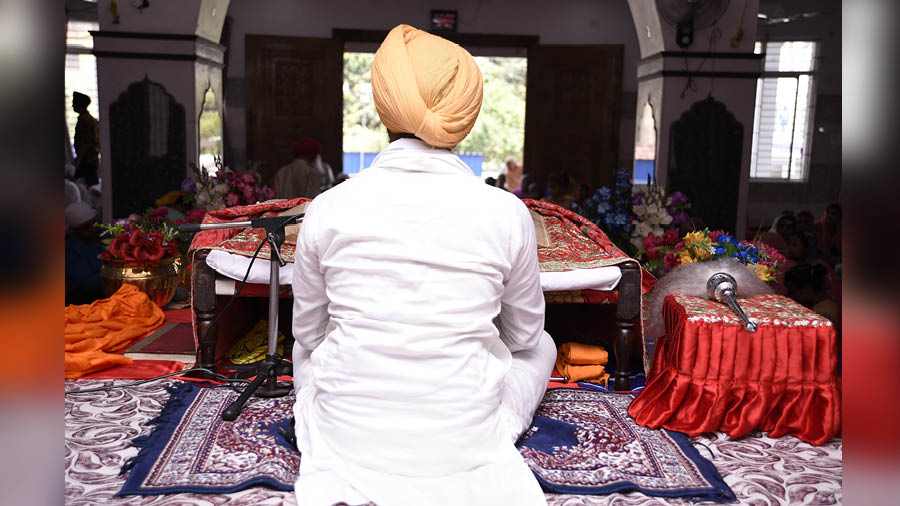
One of the rituals of Vaisakhi is the Akhand Path, an uninterrupted recitation of the Guru Granth Sahib for 48 hours Shutterstock
“For Punjabis, our main identity comes from the festival of Vaisakhi,” says systems engineer Pavit Singh Chandhok, who intends to celebrate the April 14 festival at either Gurudwara Sant Kutiya or Behala Gurudwara Sahib. “The Gurudwaras tell us about the history of the festival and its significance. We are educated about the Khalsa Panth to make us understand why we carry the five K’s, and how our ancestors have protected our pride,” he adds. The Path is followed by shabad kirtan, which comprises the Guru’s teachings. “Everyone is welcome in the Gurudwara irrespective of their faith.”
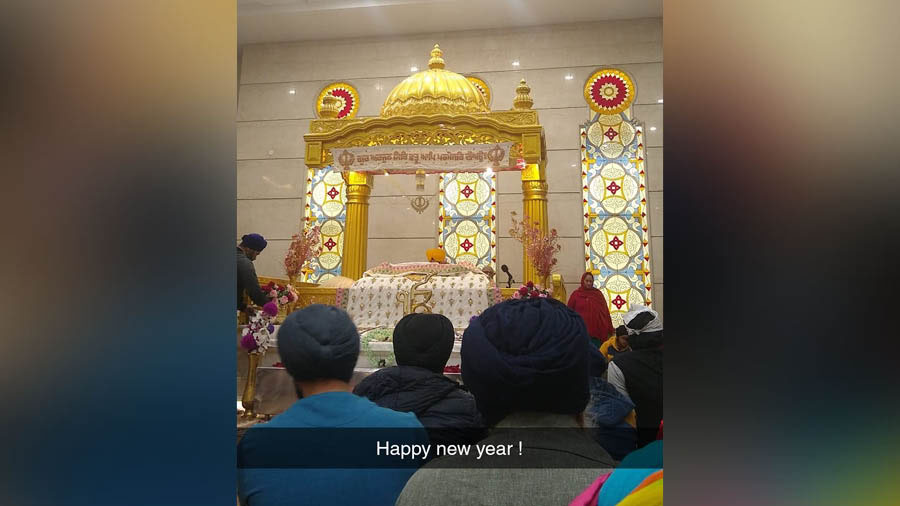
Last year’s celebrations at Gurudwara Sant Kutiya in Kolkata
“One of the hallmarks of this festival is the Akhand Path, an uninterrupted recitation of the Guru Granth Sahib for 48 hours. The Prabhat Pheri is another important tradition where people congregate early in the morning around a decorated vehicle with the Guru Granth Sahib. The procession sings devotional songs while moving towards the Gurudwara, where the holy book is placed where it belongs,” says Ruby Singh, an exam officer with the Cambridge Board.
Another integral element of the celebration is the langar, where the Gurudwara’s kitchen serves meals to everyone who comes to pray. “People are welcome to offer seva, where they can contribute in their own ways, be it by serving the langar or donating materials to the Gurudwara. While the food is made by professional cooks, the prashad is prepared by female members of the community, people like us,” Singh says, adding “this is an important celebration, signalling the harvesting of crops.”
Pana Sankranti

Traditional Pana Sankranti offerings Wikimedia Commons
For Odias in Kolkata, Pana Sankranti is one of the most important days in the year. Celebrations begin on the night of April 13, when members of the community offer prayers to the holy river Ganga. “The New Year will commence from the morning of April 15. We have two major Jagannath Temples in Kolkata, which have been founded by the Odia community, and are open to everyone. The most prominent of them is Sri Jagannath Temple Kolkata, which is near Kidderpore. Also known as Maha Bishuba Sankranti, the Odia New Year will be celebrated here on April 14 according to all the traditional rituals,” says Pradeep Kumar Mohapatra, secretary, Odias At Kolkata Welfare Association. The temple in Kidderpore observes all the rituals according to the Odia calendar, and is especially known for its seven-item bhog.

The idols at Sri Jagannath Temple Kolkata, near Kidderpore
“Pana in Pana Sankranti embodies a special drink or sherbet comprising seasonal fruits, chenna, falooda, spices and a traditional cooling agent. Since Baisakhi is the hottest season of the year, we offer this sherbet to Lord Jagannath and then have it to cool the body down,” says Archana Mishra, a housewife.
Bohag Bihu
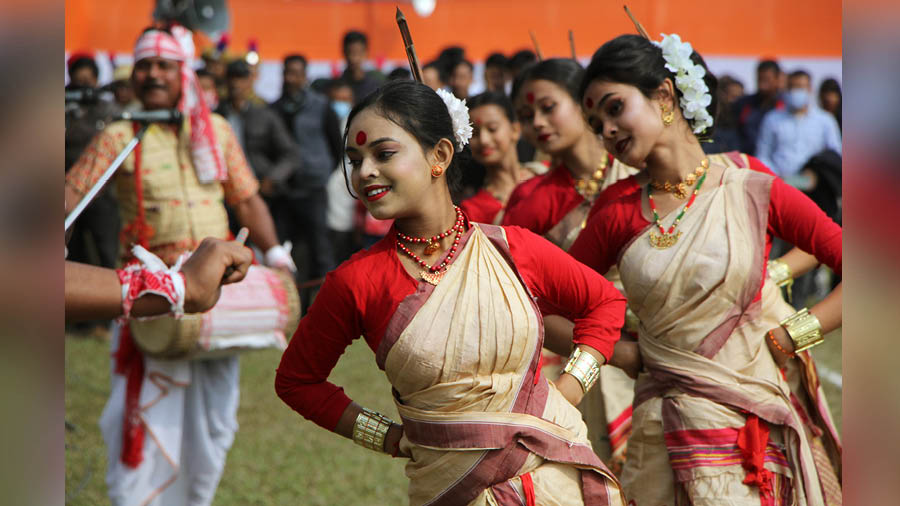
Bohag Bihu welcomes spring through song, dance and food Shutterstock
The Assamese community celebrates three Bihus, the first and most important of those is the Bohag Bihu. “Signalling the beginning of the new year, Bohag Bihu is about welcoming spring through song, dance and food. This year, it will be celebrated on April 15,” says Mitali Saikia, an educator.
In Kolkata, people traditionally gathered at Assam House in Russell Street on the day. Since it is shut for renovation, the celebration has shifted to Assam Bhavan in Salt Lake in the last few years.
“The Assam Socio Literary Club is one of the most active organisers of the Bohan Bihu festival in Kolkata, and will be celebrating their 150th anniversary this year. The Kolkata Assamese Cultural Association is another group that actively organises the event.
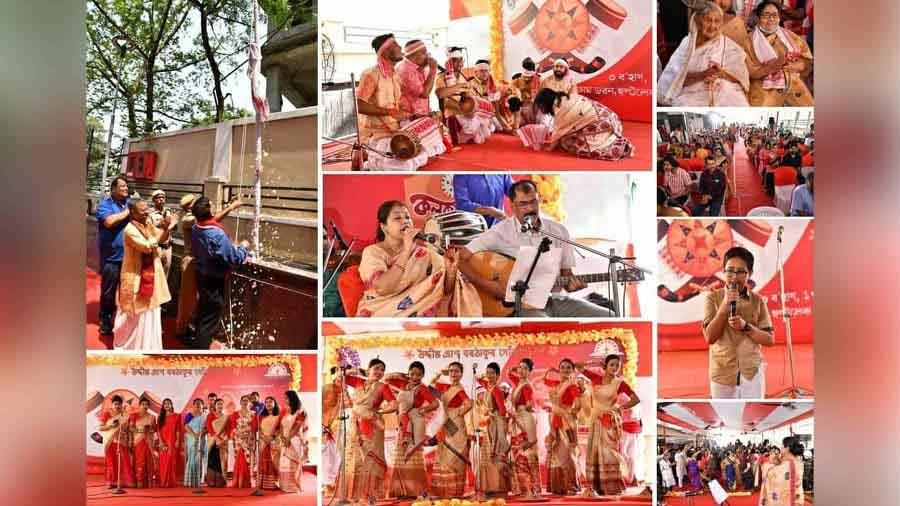
Last year's Bihu celebration by the Kolkata Assamese Cultural Association
The day is packed with traditional activities like Bihu song and dance, and cultural groups from Assam are also brought to perform. While we normally have a Pitha competition where our Assamese special dry pithas are showcased. This year, we will have a bridal competition, where women will dress up in the most elegant bridalwear,” adds Saikia.
The festivities were kicked off on April 1 this year, as the Kolkata Assamese Women's Welfare Association organised a Pre-Bihu celebration where ladies participated in a dance competition.
Mahavir Janma Kalyanak
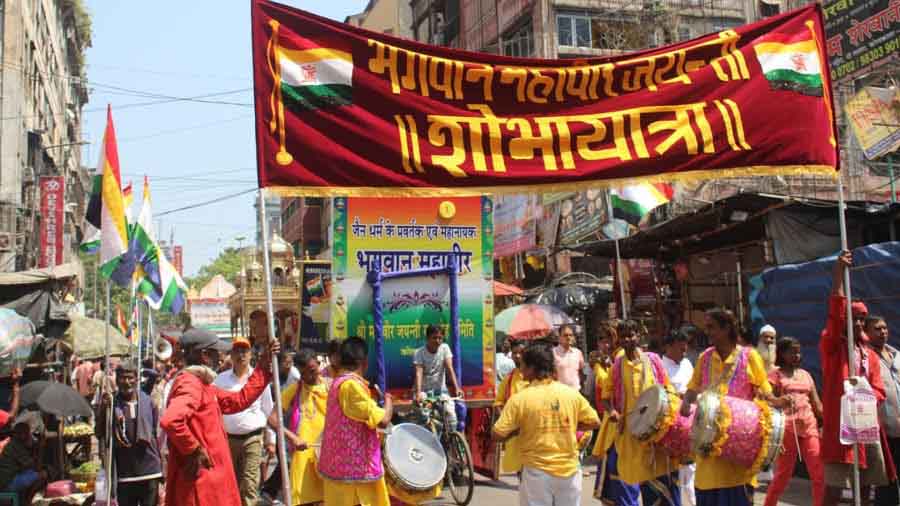
A Mahavir Jayanti procession in Kolkata on April 4 TT archives
The birth of Mahavira, the 24th tirthankara of Jainism is celebrated twice. “The most important Jain festival is Paryushan, which is celebrated in August-September. Here, we read about Mahavira’s birth in the Jain Granth, and celebrate his birth on that day with great pomp and grandeur. But, his actual birth was in the month of Chaitra, on the thirteenth day of waxing,” says Seema Sanghvi, a homemaker. This festival of Mahavir Janma Kalyanak, or Mahavir Jayanti, was celebrated on April 4.
“The story goes that when Mata Trishala was pregnant with Mahavira, she had 14 auspicious dreams. Astrologers interpreted these dreams to predict that her baby would be a tirthankara with all the values from the dreams. When he was born, Mahavira was the embodiment of all these values, and made the dreams come true,” Sanghvi explains.
She adds, “We have a nine-day celebration where we observe veganism, abstaining from oil and milk products too. We also undergo a lot of penance, and many people fast. We pay homage to Mata Trishala’s dreams in the Derasar (Jain Temple) with a cradle that has a silver coconut. People also distribute boondi laddoos among their relatives, and making kheer puri at home is an absolute must!” The festival was celebrated in some of Kolkata’s most popular Jain temples including the Parshwanath Temple and the Shree Padmavati Mata Derasar.
Vishu
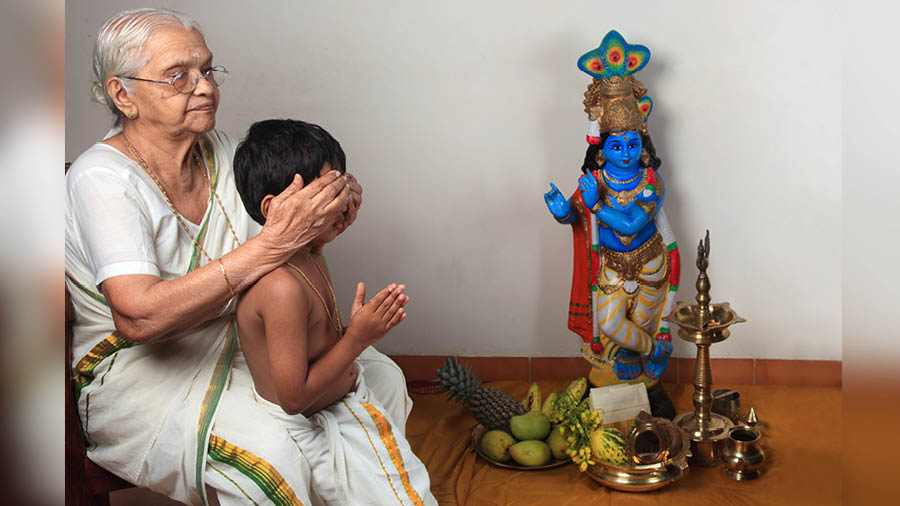
A family follows the ritual of Vishukkani Shutterstock
Malayalis also celebrate spring and the harvest of their crops during this time. P. Sudhakaran, vice president of the Calcutta Malayalee Association, emphasises its significance: “Vishu is one of the most popular festivals in Kerala for people across religions and communities. I have been in Kolkata for over 30 years, but still religiously celebrate it every year.”
Sudhakaran adds that the manner of celebration is very simple. “Every Vishu, the mother of the house wakes up early and decorates the Puja room. She then brings the family with closed eyes to the room. This room, adorned with an image of Lord Krishna, is the first thing they are supposed to see that day. This ritual is called Vishukkani. Traditionally, elders also give a coin or small monetary token to children called Kaineettam.” Vishukkani comprises rice, vegetables, fruits, yellow holy flowers called konna, gold coins, holy text, betel leaves and a metal mirror. All these items are placed before Lord Krishna.
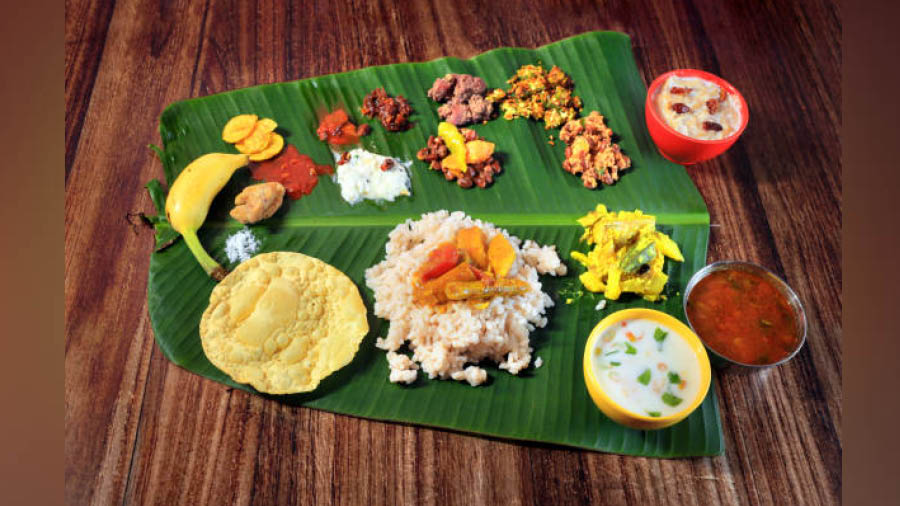
A traditional Vishu feast
Despite being in Kolkata for so long, Malayalis feel right at home during Vishu, courtesy the Sree Guruvayurappan Temple, located in Manoharpukur, says Sudhakaran, adding, “Although not as big, this temple is modelled exactly like the Guruvayur Temple in Kerala. We always go there to offer prayers after completing the rituals at home. This is followed by a vegetarian feast that includes items like curd rice, sambhar, dal, khichadi, and payasam. The day is one of regional pride, and men don the traditional mundu, while women wear settu sari and girls the pattu pavadai.”
